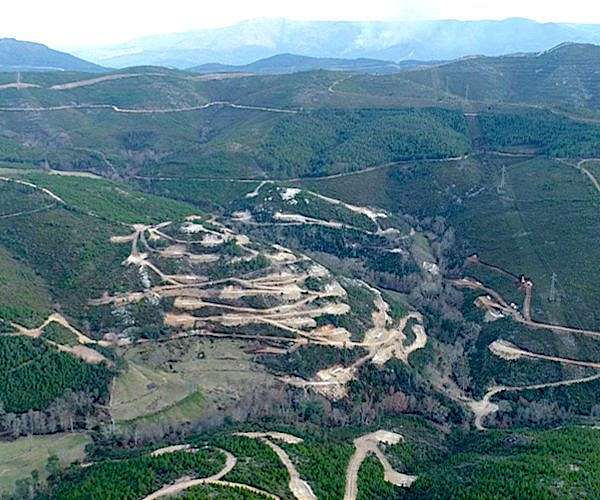Flower or power? Campaigners fear the lithium mine could kill rare plants
Delicate pink buds sway in the desert breeze, pregnant with yellow pompoms whose explosion will cover the dusty corner of Nevada, the only place on earth where they occur.
Beneath their roots lie vast reserves of lithium, crucial for the rechargeable batteries of electric cars that will reduce global warming pollution.
But campaigners fear mining of the precious metal could destroy the flower’s tiny habitat.
“This mine is going to die out,” said Patrick Donnelly, an environmental activist who works at the Center for Biological Diversity, a nongovernmental organization.
“They somehow claim they’re not harming the factory. But can you imagine if someone built an open-pit mine 200 feet from your house? Wouldn’t that profoundly affect your life?”
The plant in question is Tiehm’s buckwheat.
Only about 20,000 specimens are known, growing in a few very specific places on a total area equivalent to about five football fields.
In 2022, the wildflower was classified as endangered by US federal authorities, with mining cited as a major threat to its survival.
The plant and the lithium reserve on which it grows embody one of the key challenges and contradictions of the global climate fight: how much damage can we do to the natural world if we try to halt or reverse the problems we have already caused ?
– ‘Coexistence’ –
Bernard Rowe, boss of Australian miner Ioneer, which owns mineral rights to the area, says the lithium produced at Rhyolite Ridge “will be sufficient to power around 370,000 vehicles annually”.
“We’ll continue to do that year after year for 26 years,” he said.
Those nearly 10 million vehicles will go a long way toward achieving the goal President Joe Biden has set: downsizing America’s fleet of gas guzzlers as a way to reduce U.S. production of planet-warming pollutants.
So-called zero-emission cars currently account for about 7.5 percent of new vehicle sales in the United States — more than double the percentage just a few years earlier.
In California this figure is more than 20 percent.
And while industry expansion has slowed, the category remains the fastest growing, according to Kelley Blue Book.
And this doesn’t just apply to the United States: according to the International Energy Agency, global demand for lithium will increase five to seven times by 2030.
The problem for US manufacturers is that much of the world’s lithium supply is dominated by strategic rival China, as well as Australia and Chile.
“The United States has very, very little domestic manufacturing,” Rowe says.
“So it’s important to develop a domestic supply chain to enable that energy transition, and Rhyolite Ridge will be an integral part of that.”
Ioneer’s plans show that over the years the mine is in operation (expected to begin producing lithium in late 2027), approximately one-fifth of the plant’s habitat will be directly affected.
But the company, which has spent $2.5 million investigating the plant, says mining will not affect its survival; it already grows well in greenhouses and biologists think it can be replanted.
“We are confident that the mine and Tiehm’s buckwheat can co-exist,” Rowe said.
– ‘Greenwashing’ –
Donnelly responds that Ioneer is “basically the extinction of greenwashing.”
“They say, ‘We’re going to save this plant,’ when in reality they’re sending it into ruin,” he said.
Under the company’s plans, the strip mine will use hundreds of trucks, which Donnelly said will generate clouds of dust that will affect photosynthesis and harm the insects that pollinate the plants.
Ioneer says it has already planned mitigation methods such as dust curtains and keeping the roads wet.
Still, Donnelly says, why don’t we just move the mine? But Rowe responds that it’s not as simple as just digging somewhere else.
Ioneer has invested $170 million since 2016 to demonstrate the feasibility of this site, which it claims is one of the best available.
“Many of these other deposits have not had as much work, so they are not viable alternatives for a project like this,” he said.
The U.S. Department of Energy has offered Ioneer a $700 million loan for the project if the Bureau of Land Management signs an operating permit.
Donnelly insists that the problem is not just the future of one obscure wildflower, but rather just one example of large-scale biodiversity loss that threatens millions of plants and animals.
“If we solve the climate crisis, but everything goes extinct while we do it, we will still lose our world,” he said.


